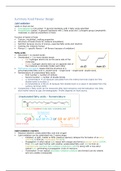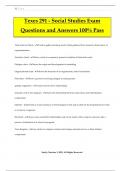Samenvatting
Summary Food Flavour Design (FQD-37806) - Complete course content
- Instelling
- Wageningen University (WUR)
Summary for the course Food Flavour Design (Wageningen University) Content: - Lipid oxidation - Fermentation - Maillard reaction - Flavour experience in the body - Taste and odour receptors - Impact of oral processing behaviour and oral physiology on flavour release and perception - Drivers of flav...
[Meer zien]








